Meet Chainmaille Artisan Josh Diliberto And Find Out His Approach to Making New Designs
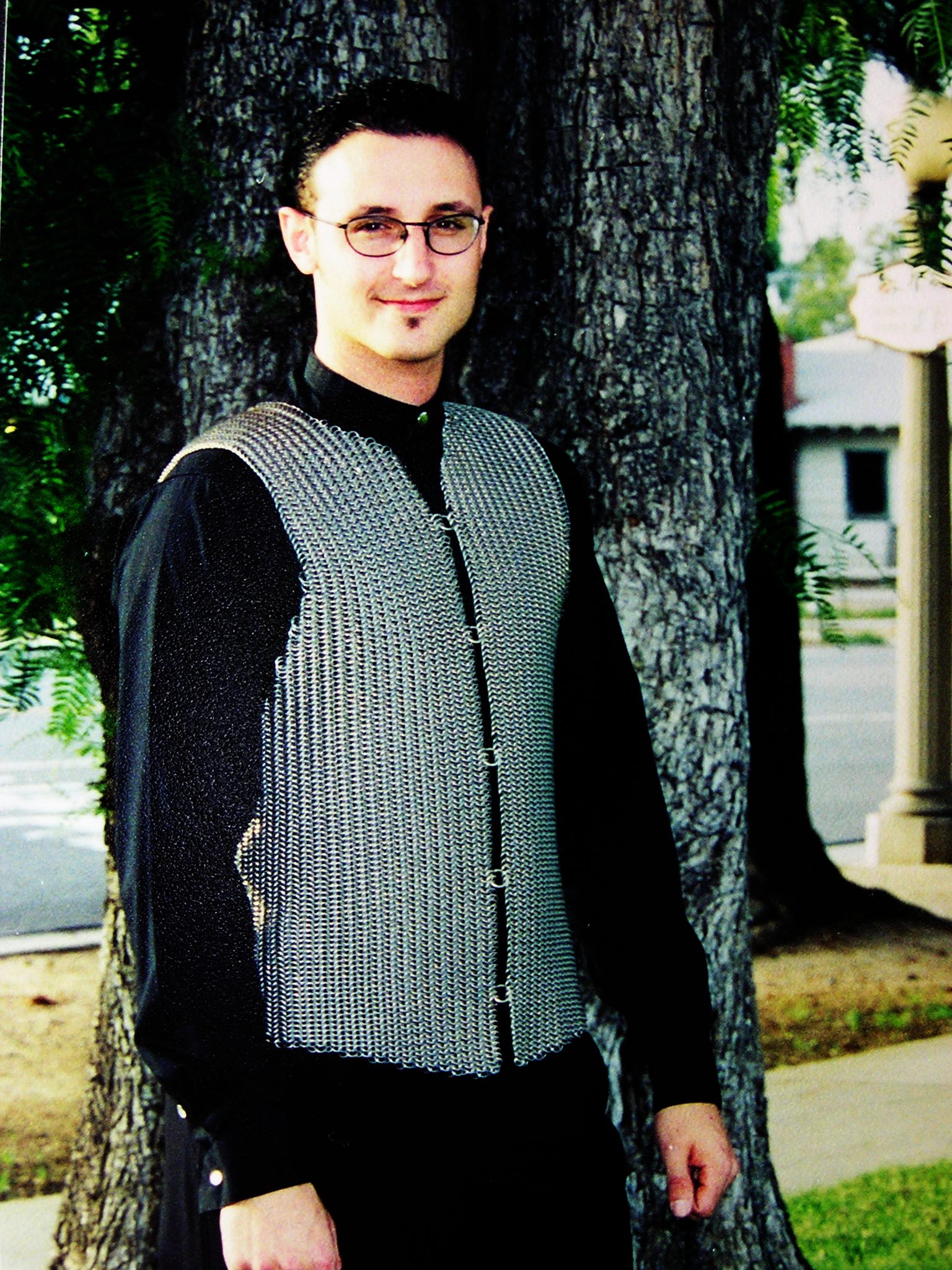 Scroll through the weave libraries of M.A.I.L. (Maille Artisans International League) and you’ll undoubtedly encounter many submissions from mithrilweaver: weave variation after weave variation, more than 100 weave submissions and 240+ gallery submissions in all. Josh is a well-known contributor to the Chain Maille group on Facebook and has fans and customers all over the world. I’ve received numerous requests to interview him, and I’m happy to bring you this article!
Scroll through the weave libraries of M.A.I.L. (Maille Artisans International League) and you’ll undoubtedly encounter many submissions from mithrilweaver: weave variation after weave variation, more than 100 weave submissions and 240+ gallery submissions in all. Josh is a well-known contributor to the Chain Maille group on Facebook and has fans and customers all over the world. I’ve received numerous requests to interview him, and I’m happy to bring you this article!
Every month in Blue Buddha’s Meet the Artist series, we chat with a different chainmaille artist to find out more about their process, history, inspiration and goals. We also try to uncover one or two things you might not know about them, even if you’re already familiar with their work.
In this edition, you’ll meet artist, instructor and chainmaille supplier Josh Diliberto of McLean, Virginia. Enjoy!
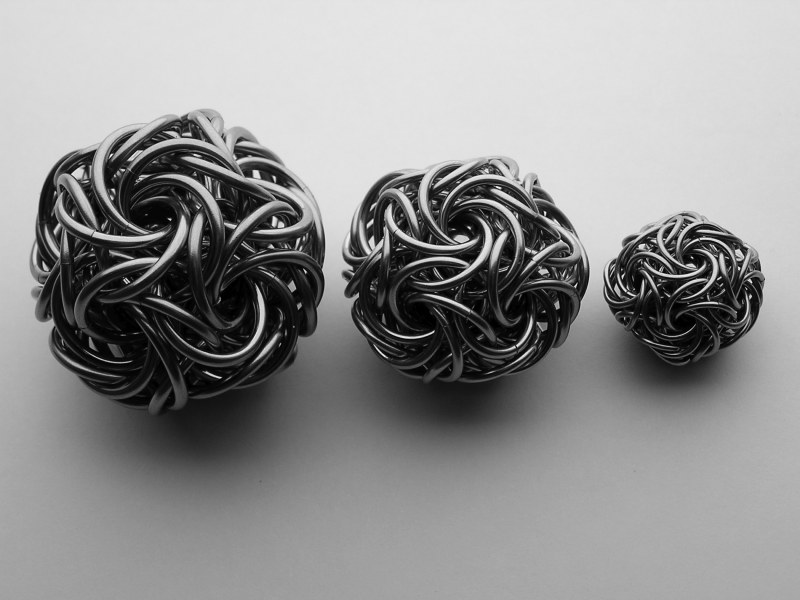 Thanks for taking some time to let us get to know you, Josh! First off – how do you pronounce your last name?
Thanks for taking some time to let us get to know you, Josh! First off – how do you pronounce your last name?
I pronounce my last name “dee-lee-bear-toe.” That is the Sicilian pronunciation. If you want to say it American, you would pronounce it just like it sounds. It means “of the liberty” – Di-Liberto. Joshua in hebrew is pronounced “ee-yeshua” and means “savior.” So, put together, my fist and last name means “savior of the liberty.” But… you can just call me Josh.
OK, Josh! How did you get into chainmaille?
I was inspired to try making chainmaille after watching the movie “Braveheart” in 1994. My mind loves patterns. After seeing chainmaille armor in that movie, I knew I had to try it. I’ve always enjoyed sewing and stitching and the idea of doing similar things with metal was just so appealing. (I think the first inspiration was at the age of 5 when doing paper ring 2-in-1 chain decorations for Christmas!)
I tried to make my first chainmaille item—a vest—in 1996 using nickel silver. I wound the wire and cut it with a jeweler’s saw by hand. I wanted to use stainless, but I couldn’t cut it with the same hand saw. I never liked the snipped or machine cut rings. My OCD has a hard time dealing with the look and feel of machine cut rings. The weave I used on my first vest was Japanese 4-in-1 Sheet. I used 16swg 3/16″ rings. Making this project put me into debt for the first time in my life at the age of 19.
When I was 20, I met a man named Michael DeVeny at the So-Cal Ren Faire. He was about 35 years old at the time and he really blew my mind. He probably had 50 weave samples on display and he had so many sculptures and designs to show me. I literally stayed at his booth for 4 hours talking to him. The amount of joy I got from that chance encounter was astounding and fueled my motivation throughout my career.
That’s terrific that you had an interaction like that to kickstart your chainmaille career. I’ve found that an inspirational experience when embarking upon a new path can really help someone persevere through future tough times.
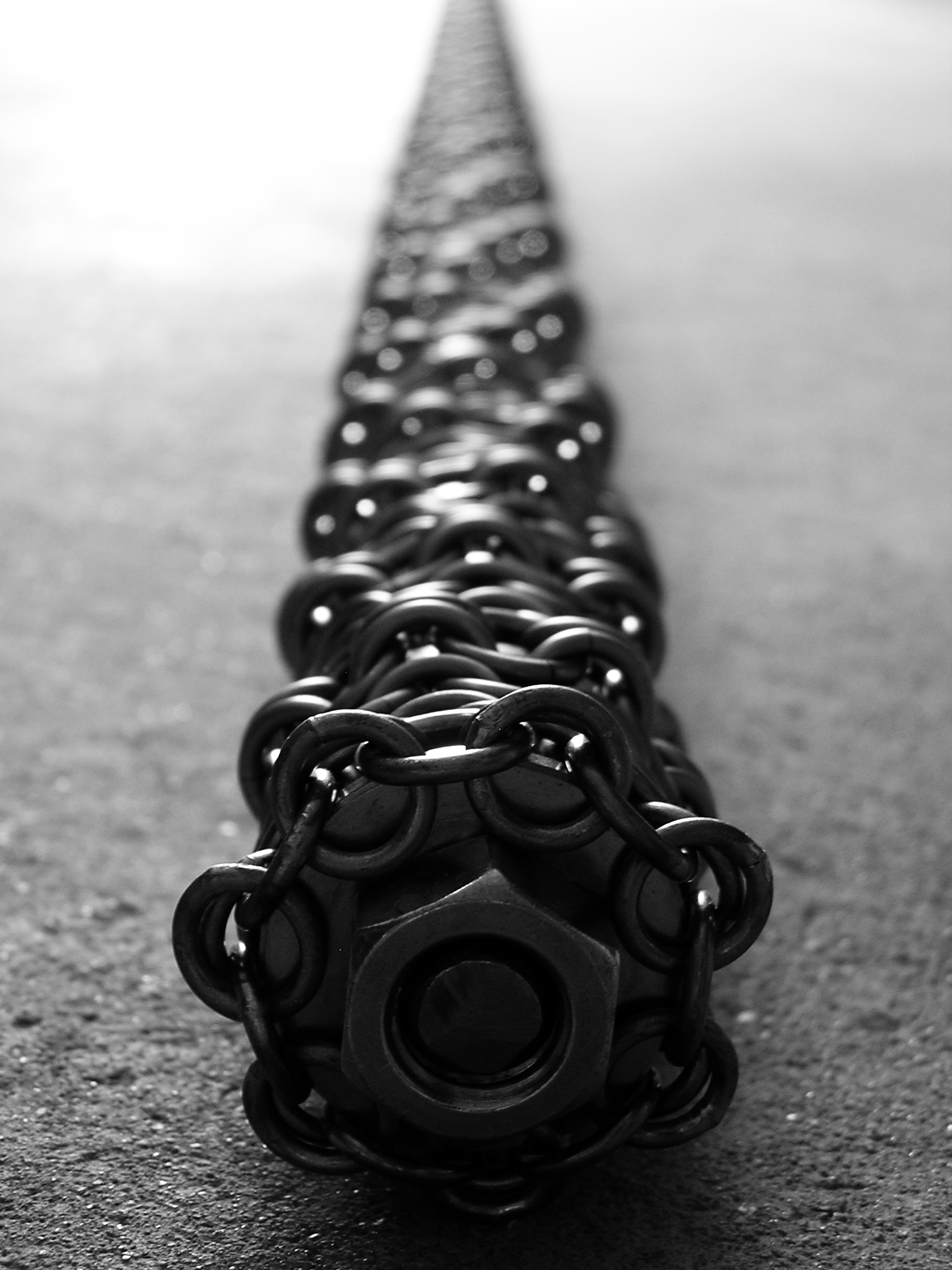 Certainly. My 20’s were bleak for many reasons, mostly because I went from soul-sucking job to soul-sucking job. All the while, I kept doing chainmaille on my own time as a hobby. I got into making chainmaille jewelry and made some new weaves at this time of my life (though no one knew about them). I worked alone, as in I didn’t meet with other chainmaillers. I had no mentor or teacher for 10 years. I sold some stuff to friends and family and at street market fairs, but never earned enough to live off of. I’m extremely introverted and I avoid most social events. The isolation led me to create new things instead of making already established weaves. The bad part was, I ended up remaking many weaves that were very common while thinking they were new. So, I remade the wheel hundreds of times. I wouldn’t say the time was wasted because it taught me how to make new weaves on my own and to appreciate the time spent. When someone figures something out on their own, there is an underlying value in how they came to learn. Not only is it leaned how to make the item, but the process by which the item is created is learned. The learning reward can be very large in some cases. In other cases, you spend days only leaning what not to do. Either way, there is learning.
Certainly. My 20’s were bleak for many reasons, mostly because I went from soul-sucking job to soul-sucking job. All the while, I kept doing chainmaille on my own time as a hobby. I got into making chainmaille jewelry and made some new weaves at this time of my life (though no one knew about them). I worked alone, as in I didn’t meet with other chainmaillers. I had no mentor or teacher for 10 years. I sold some stuff to friends and family and at street market fairs, but never earned enough to live off of. I’m extremely introverted and I avoid most social events. The isolation led me to create new things instead of making already established weaves. The bad part was, I ended up remaking many weaves that were very common while thinking they were new. So, I remade the wheel hundreds of times. I wouldn’t say the time was wasted because it taught me how to make new weaves on my own and to appreciate the time spent. When someone figures something out on their own, there is an underlying value in how they came to learn. Not only is it leaned how to make the item, but the process by which the item is created is learned. The learning reward can be very large in some cases. In other cases, you spend days only leaning what not to do. Either way, there is learning.
I wholeheartedly agree! One of the first weaves I “made up” turned out to be Box, haha. But I still never forget how terrific it felt to discover it on my own.
So, what happened next in your chainmaille life?
In my 30’s I became a professional artist, quit my old day jobs, joined M.A.I.L., joined Facebook groups, and I became a merchant at Bristol Renaissance Faire. My venture into social media and being part of the chainmaille community has been very rewarding and positive. It added some balance to my life. I was too isolated in my 20’s to really make any kind of break through. I started to embrace the chainmaille hive mindset where we all inspire and feed off of each other’s creative energy. I’m convinced that I have created more quantity and quality work because I connected to others in our field. I try to have a very open and welcoming philosophy when it comes to intellectual property. I really don’t mind if people copy my work or make the same designs that I do. I give away free information often. In return, the chainmaille community has opened it’s arms to me. I feel very loved and secure in our community. It’s very special and important to me.

In my late 30’s and current early 40’s I ventured into selling supplies, tutorial, and kits. The main reason I wanted to get into these things was because I wanted to work from home. I no longer wanted to travel a lot doing renaissance fairs and selling only finished product. I was also concerned that my hands would someday give out and I would not be able to make chainmaille at high volumes anymore. The great thing about selling tutorials is that you only ever have to make the tutorial once and money continues to come in. Making tutorials doesn’t bring in huge money, but it’s a consistent flow that will always be there. The more tutorials I make, the more reward. I have about 45 tutorials for sale now. Rings and kit sales bring in most of my income now. I don’t love making rings so much, but it keeps me active in the industry while I get to also stay home and help raise my daughter Karuna with my wife Brooke. Finish product sales to the public are still active and I also sell wholesale finished product to ren faire vendors.
I never thought I could make chainmaille a viable business. I quit 3 times in my life and always returned. Only now in my 40’s have i started to be able to make a good living off of chainmaille. It’s been a really rough journey, but I’m glad that I persisted.
Obviously I can only speak for myself–but I’m sure many others will agree–I’m so glad you persisted, too! Your contributions to this craft are immeasurable. I’d love to know what inspires you.
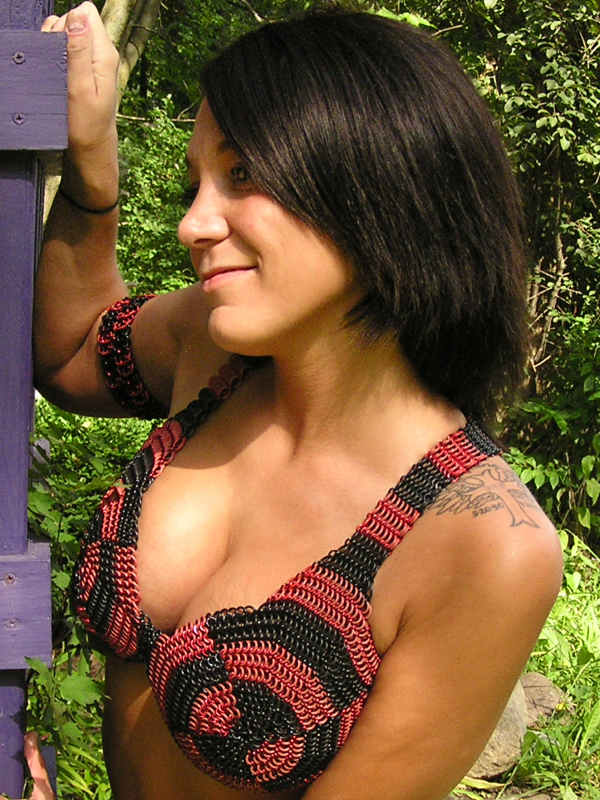 Detail and quality interest me. I love drawing photorealistic drawings because of the detail oriented work. I love architecture too for the same reason. I’m really into quantum mechanics. There is this phenomenon where if you join enough small things together, new properties begin to emerge. For example, the property of one ring has certain properties, but If you start joining rings together, the new structure of connected rings begins to have new properties. The end result is so much more than just “x” number of rings. Weave properties like flexibility, strength, cross section, symmetry, and more begin to emerge. It’s fascinating to me. A chainmaille ring is like an atom. Atoms join together to make molecules. Molecules join to make physical substances in nature. The range of physical properties in our universe is incredible and yet everything is made up of only 92 different elements. That’s how chainmaille is. It all begins with a few different size torus shaped rings, and from those rings, tons of weaves and properties can result. Building a house, drawing a picture, writing a poem, weaving chainmaille, or anything creative in life is fun, for me, because of this phenomenon.
Detail and quality interest me. I love drawing photorealistic drawings because of the detail oriented work. I love architecture too for the same reason. I’m really into quantum mechanics. There is this phenomenon where if you join enough small things together, new properties begin to emerge. For example, the property of one ring has certain properties, but If you start joining rings together, the new structure of connected rings begins to have new properties. The end result is so much more than just “x” number of rings. Weave properties like flexibility, strength, cross section, symmetry, and more begin to emerge. It’s fascinating to me. A chainmaille ring is like an atom. Atoms join together to make molecules. Molecules join to make physical substances in nature. The range of physical properties in our universe is incredible and yet everything is made up of only 92 different elements. That’s how chainmaille is. It all begins with a few different size torus shaped rings, and from those rings, tons of weaves and properties can result. Building a house, drawing a picture, writing a poem, weaving chainmaille, or anything creative in life is fun, for me, because of this phenomenon.
Oh man, I’m such a science nerd, I absolutely LOVE everything you just said. 😄
You’re quite prolific with discovering patterns. How do you come up with so many?
Coming up with new weaves and variants is what I love. I wish I could do more of that. How do I come up with them? It’s hard to explain. There are many ways that it seems to happen. One way it happens is when I need to make a project for a customer who wants specific attributes. The need sometimes becomes the driving force behind the creation. Another way is just to try established weaves and say “what if?” What if I put this ring here instead? I swear every time I try an established weave, I end up making 3 variants that are new. Then those 3 variants end up having 3 variants too. It just goes on and on. This is why I’m convinced that there are infinite possible weaves. I have thousands of ideas for weaves and I only ever get to try a few of them because of time constraints. Many times, If I go 2 or more steps beyond the original weave, I will create a new weave that is not just a variant. Out of 100 weaves that I create, only 10 of them are viable variants. Of those 10, only 1 will become an awesome new original weave. I have a box of “mistakes.” My mistakes box is 10 times larger than my weave library.
Ha! I completely understand! *looks over at own mistakes box* 😉
It’s also possible to make new weaves mathematically using a network of connection possibilities. That is how my R.I.M. (Ring Interaction Model) was born. It shows all the possible connections for each numbered ring system. For example, how many possible different structures can 3 rings make? The answer is 3. There is Mobius (left and right handed), Straight 2 in 1 Chain, and Orbit. With 4 rings, the possible number of structures jumps to 19. Just by working out the possible ring interactions with 4 rings, I came up with 3 new weaves. Imagine what would come of working out the 5th level. I haven’t tried yet, but I’m thinking the 5th level would produce about 200 possible structures.
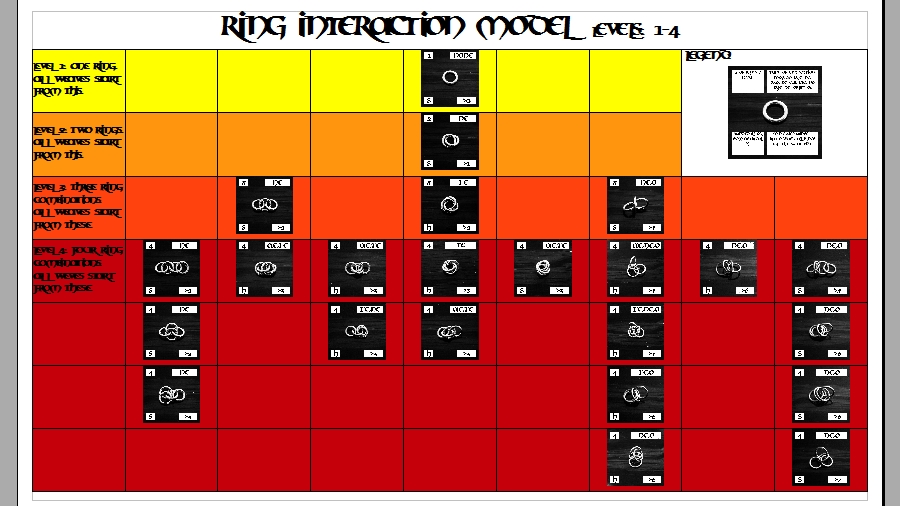 Wow, that’s so cool. I love this rather cerebral approach to discovering new patterns.
Wow, that’s so cool. I love this rather cerebral approach to discovering new patterns.
What’s your “normal” workday like? Do you have strategies for making sure nothing gets dropped?
I think everyone has strengths. I’m absolutely addicted to creating. I only really care about money as far as it enables me to create more. I think one of my strengths lies in efficient system creation. I really enjoy organizing and finding ways to do things efficiently. I have work stations set up in my office and my garage. Each work station has specific designs to help aide ergonomics, creativity, quality, safety, motivation, and more. I move from station to station through out each day so I don’t get burned out on any one thing. I’m a huge planner. Every night before I sleep I plan out the next day in my head. I keep the expectations of that day small. So, when I complete all the tasks of that day, I always have extra time for me and my family. Since I work at home, it’s really difficult to have work-life balance and separation. I have to communicate often with my family to let them know when I’m working so they don’t interrupt me constantly.
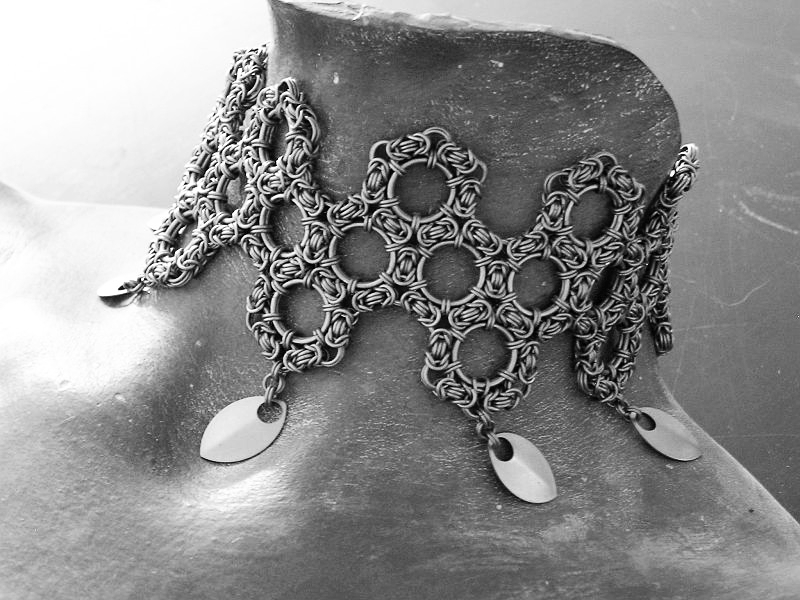 If I feel sad, unmotivated, sick, or hurt, I don’t work. Instead, I dive into those feelings to deal and cope with them. I found over and over again that when I try to push through work and ignore these feelings, the consequences of that are much more severe than if I had just taken a break. This positive atmosphere that I created in my work environment has really allowed me to increase my work load. I really don’t like to call what I do “work.” “Work” is such a loaded word with so many feelings behind it. I think of “work” similar to obligation or duty – something that is not really enjoyed or something we have to do for money. If I pressured myself everyday to make money, I would only be able to work for a couple of hours because my mind would be so full of negative voice. It’s that negative voice that drags people down and keeps them from loving what they do. But, the hard part is finding work that you can be positive about. I think it’s really hard to find a positive dynamic in a job when a person works for a company or boss. The natural hierarchy or order keeps the employee from rarely being able to find equality which is a basic requirement before a positive mindset can be attained.
If I feel sad, unmotivated, sick, or hurt, I don’t work. Instead, I dive into those feelings to deal and cope with them. I found over and over again that when I try to push through work and ignore these feelings, the consequences of that are much more severe than if I had just taken a break. This positive atmosphere that I created in my work environment has really allowed me to increase my work load. I really don’t like to call what I do “work.” “Work” is such a loaded word with so many feelings behind it. I think of “work” similar to obligation or duty – something that is not really enjoyed or something we have to do for money. If I pressured myself everyday to make money, I would only be able to work for a couple of hours because my mind would be so full of negative voice. It’s that negative voice that drags people down and keeps them from loving what they do. But, the hard part is finding work that you can be positive about. I think it’s really hard to find a positive dynamic in a job when a person works for a company or boss. The natural hierarchy or order keeps the employee from rarely being able to find equality which is a basic requirement before a positive mindset can be attained.
I wake up at 3am most mornings full of energy. I have no alarm clock. Sometimes I work 10-hour days and other times I work 1-hour days. It all depends on where I am that day and what I’m dealing with. It’s nice to be able to stay home with my daughter when she is sick or go on a trip with my wife when she has a day off work. I also want to be clear that I am very fortunate to have support from my wife. The small success that I have is not just because of me and what I do.
What is your current goal?
My current goal is to become financially independent so I can focus all my energy on making new weaves and creating an online database of weaves that is higher quality and more comprehensive than the M.A.I.L. weave library. So far, I have 300 weaves documented. M.A.I.L. has over 1400 currently. I discovered about 110 weaves so far. I always try to say “discovered” instead of “created” because I get a greater sense of uncovering something that has always been there when I make a new weave. It’s not so much me doing anything to create a new weave. It’s much like a scientist discovers a new law of nature, a new constant, or physical property of the universe..
That’s a really cool analogy!
What’s your favorite piece (or pieces) of jewelry (or an accessory) that you’ve created?
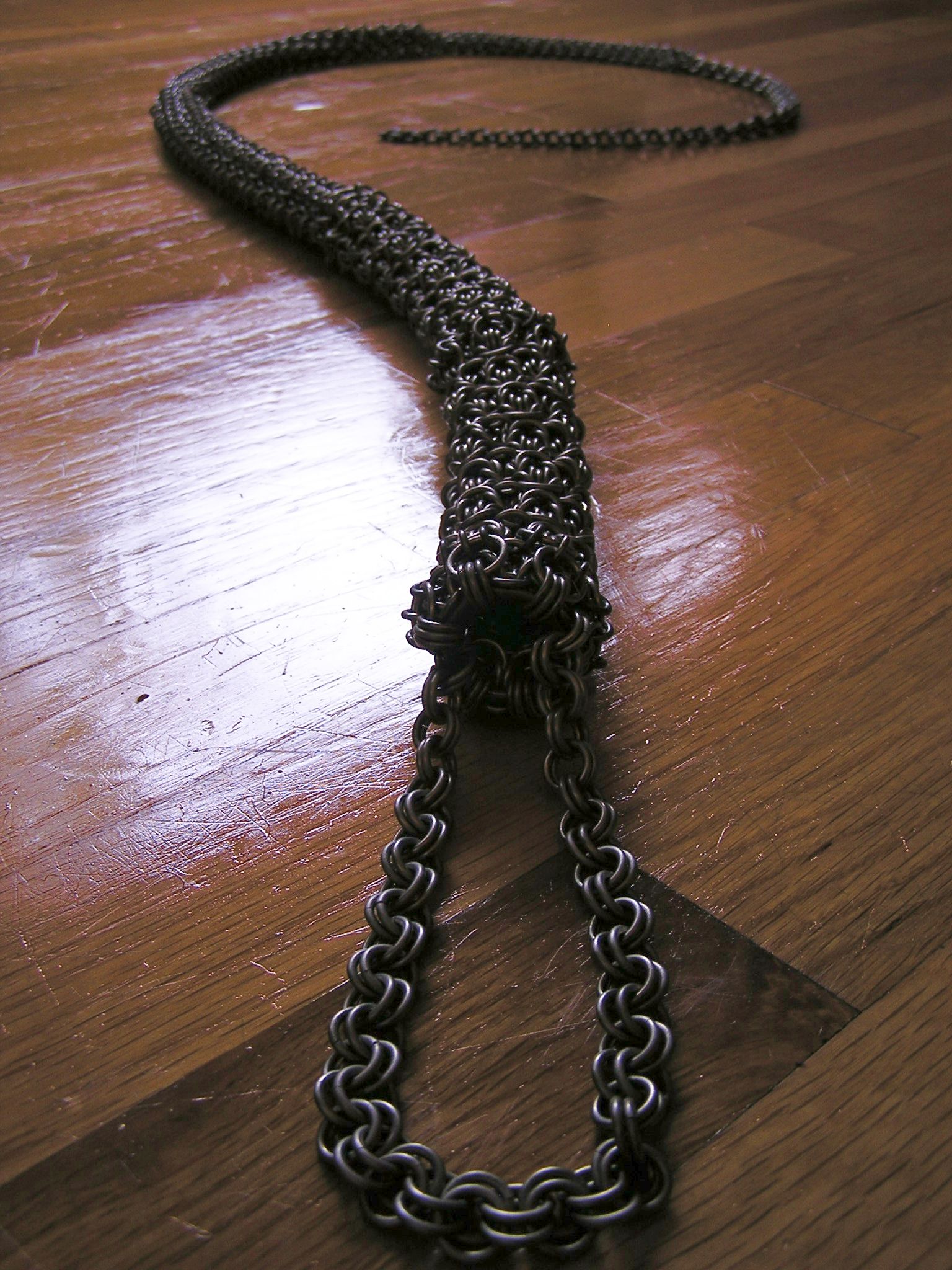 I think my favorite piece that I made was a functioning welded titanium bull whip. It took me about 6 weeks to make and I earned a really nice commission from it. I loved the challenge. It was very difficult to design because a bull whip has to get slightly more flexible as it gets smaller down to the fall. I had to use a different weave at each section and then joining them all together in a way that worked was very difficult. It’s 6′ long and I used about 4000 rings in it!
I think my favorite piece that I made was a functioning welded titanium bull whip. It took me about 6 weeks to make and I earned a really nice commission from it. I loved the challenge. It was very difficult to design because a bull whip has to get slightly more flexible as it gets smaller down to the fall. I had to use a different weave at each section and then joining them all together in a way that worked was very difficult. It’s 6′ long and I used about 4000 rings in it!
Other than the bullwhip, what is something (either another piece, or a weave/technique, or an accomplishment, etc) that you are really proud to have done?
I think Elf Bridge Chain is my greatest intellectual accomplishment in the chainmaille industry. It’s by far the best weave I’ve discovered and I love sharing it with the world. It’s essentially the 6 in 1 version of Elf Weave. It eluded so many people for so long because it’s counter intuitive. The edge rings are 5 in 1 and the middle rings are 6 in 1. It also works best with 2 ring sizes. I don’t think anyone was expecting it to have those properties. Consequently, I went on to apply my knowledge of Elf Bridge Chain to discover Elf Viaduct Chain which is the 8 in 1 version of Elf Weave.
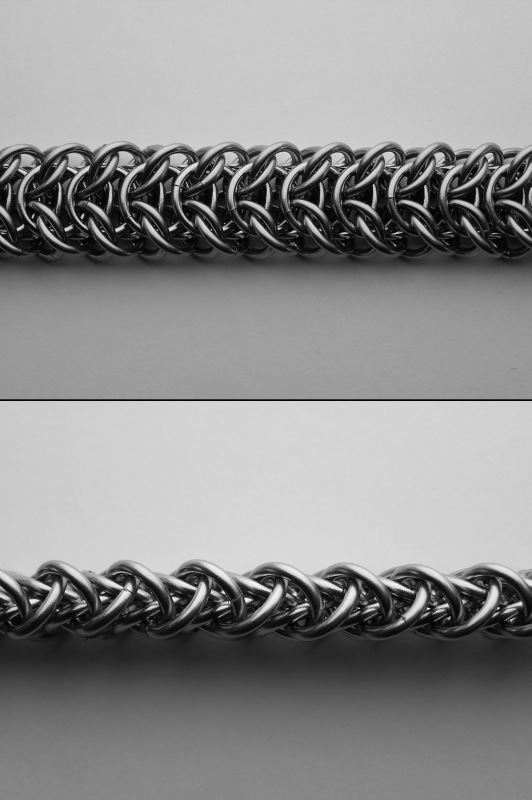 Besides Elf Bridge Chain, I’m really proud of my JPL7 Alternate discovery. I found a way to make JPL7 with smaller AR rings. The weave is more efficient and stronger with a smaller cross section. It’s my stance that my JPL7 alternate is the true JPL7, but I was unable to convince others in our community.
Besides Elf Bridge Chain, I’m really proud of my JPL7 Alternate discovery. I found a way to make JPL7 with smaller AR rings. The weave is more efficient and stronger with a smaller cross section. It’s my stance that my JPL7 alternate is the true JPL7, but I was unable to convince others in our community.
What’s your favorite tool?
There are so many tools I can’t live without. A very import one is my modified Ringinator from Martin. It’s just so important to be able to cut any size ring I need. To discover new weaves, I have to have every possible ring size.
LOL, yeeessss!!! All the sizes!
So, this is not maille-related at all, but I’m curious to know why your website is all in caps. Is it an architecture thing? I know multiple architects/design folk who hand write in all caps and am wondering if there’s a correlation?
Yes, once upon a time I wanted to get into architecture, but I didn’t like all the building codes. I took many classes in high school and I was taught to write in all caps. I’m also well known for writing in all lower case too. I used to tell my English teachers that all the letters are equal and none of them is more important than another. It’s a sound philosophy, but it still didn’t go over very well, especially in college. (I dropped out of college after my second year.)
Ha! Challenging institutional tenets often doesn’t go over very well, but that’s a whole ‘nother conversation. 😉
Here’s a very specific, burning question from a fan: “Is it possible to make your karma weave with double capture rings instead of just one? But still keep it flexible and small?”
It’s possible that Karma could be made with 2 capture rings in each section. I’ve not tried, but the result would be larger if it was possible.
OK, onto some quick questions:
Do you listen to music/podcasts/tv/etc while mailling? If so, what are your favorites?
What are your favorite artists (chainmaille or otherwise)?
I admire any artist that works in detail. Chuck Close and Alex Grey come to mind. I would like to connect with Michael DeVeny again. I’ve been unable to get a hold of him. He’s very much off the grid.
What would your superpower be and why?
I would love to mind control people like professor X. But how would I be able to do that in a moral way?
What’s the best piece of advice you’ve ever been given?
Experience everything. Be diverse. Better to be slightly good at everything than to be great at one thing. The worst piece of advice: Quit.
What’s one thing Blue Buddha readers might be surprised to know about you?
I’m really into Buddhism.
Before we let you go, please tell us where we can find your work!
Website: www.joshuadiliberto.com
profile on M.A.I.L. – mithrilweaver
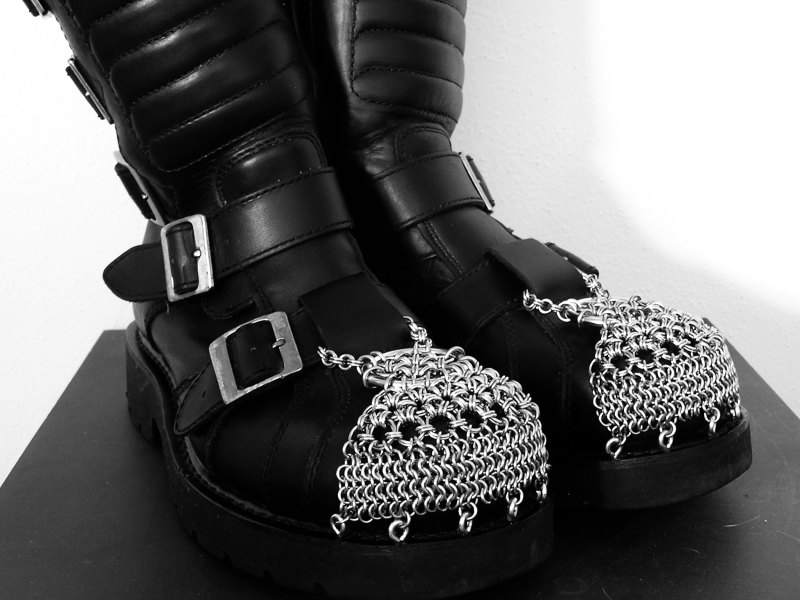
Thanks so much for taking the time to chat with us, Josh! I really enjoyed learning about your approach to maille and life in general. I wish you continued success with your business!
And thank you to everyone who’s read this interview to the end. While you’re here, be sure to check out the previous “Meet an Artist” posts: http://www.bluebuddhaboutique.com/blog/category/ask-an-artist-series/ and let me know if there’s anyone you want to see interviewed and any questions you have for them. ‘Til next time, happy crafting!
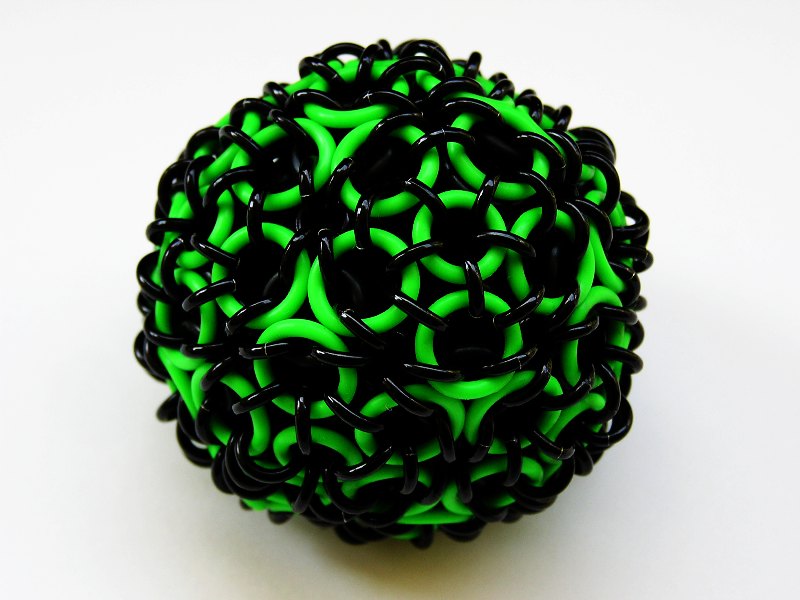

Leave a Reply
Be the First to Comment!